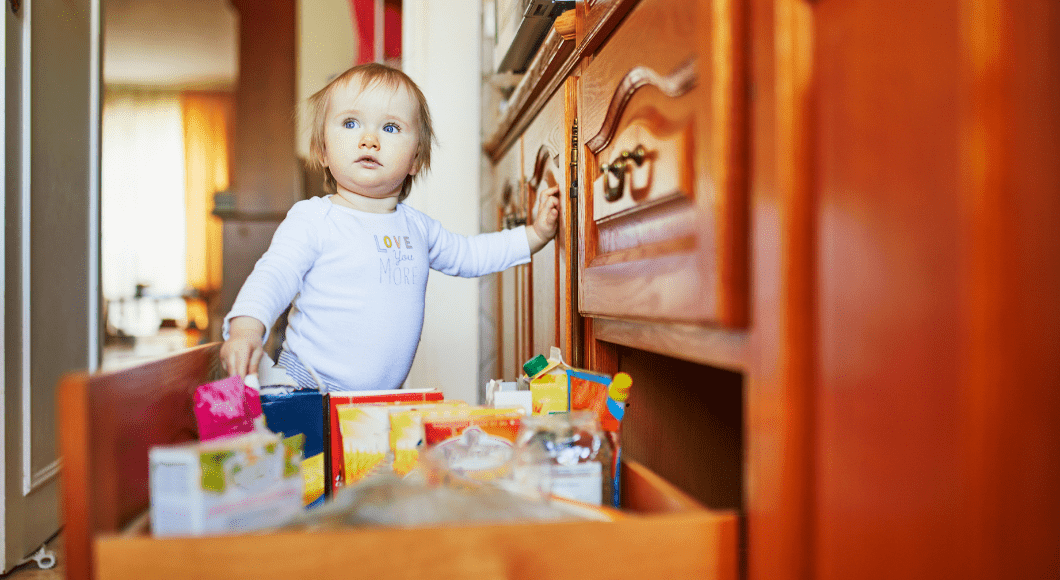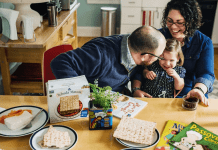 Childproofing is a task you think you’re prepared for . . . then reality hits. Your thoughtfully decorated home now serves a new purpose — to keep your child safe. Moms can be easily overwhelmed and unsure of where to start.
Childproofing is a task you think you’re prepared for . . . then reality hits. Your thoughtfully decorated home now serves a new purpose — to keep your child safe. Moms can be easily overwhelmed and unsure of where to start.
In my experience, moms tend to fall in one of two camps for childproofing: The “just enough” moms and the “over the top” moms. What seems to set them apart is aesthetic. Most moms desire for their home to maintain some level of aesthetic. After all, mom lives there, too.
The Look
So, how do you pull off the “visually appealing yet childproofed” look? Truthfully, it’s easier than you think!
Like most things child centered, recommendations and products have evolved since we were little. The market has options to meet the needs (and look) for every household.
>> RELATED READ :: A Case Against Childproofing <<
Here are my tips for childproofing without losing your aesthetic.
- Identify the major hazards. These are the “big” and obvious concerns. Stairs, cabinets, furniture, and outlets are usually on this list. Tip: Purchase extra keys (magnets) for cabinet locks. I’ve relied on a backup several times when the main key was stuck to a pan or locked in a cabinet.
- Look up. Comical as it sounds, put yourself at your child’s level and look around. You will identify additional items that need protection or relocation. Consider the following:
- Pet food/water bowls
- Trash cans
- Work and personal bags
- Utensils and sharp objects
- Decor and small furniture
- Toys (if you have other kids)
- Prioritize your to-proof list and measure twice. You’ll likely shop online for a few products, like gates. Have measurements in-hand to streamline the process.
>> RELATED READ :: One Simple Step Can Save Your Child’s Life <<
- Be creative. Gates were the most challenging items for me due to layout and visuals. I chose this gate for downstairs, so it’s hidden when not in use, and use velcro strips to tether this gate to the baluster upstairs when open. I used this gate mounting kit to prevent permanent damage to my banister post.
- Leave space for kids to explore. Assign a kitchen cabinet or drawers for your child and leave them unlocked. Allowing your child space helps teach boundaries and encourages them to play safely.
 A Few Additions
A Few Additions
Here’s a few tasks I’ve added as my son became a toddler, and now preschooler.
- Toy rotation and organization. Once a month I swap out books and toys to maintain interest and make room for new items. My son has learned where things go, so clean-up is easy and we aren’t tripping over parts and pieces.
- Move items out of reach. Thanks to online shopping and distant family, my son understands presents come in boxes. After he turned three, we quickly saw him b-line for the scissors to open everything. Scissors and lighters are now stored in upper and locked lower cabinets.
- Close doors completely. My son can’t open doors himself (yet), so we’re diligent about closing doors. While he doesn’t climb shelves and counters, he will move his learning tower or a step stool to reach items on shelves. For now, a closed door keeps him safe. We plan to add locks to the top of our external doors to keep everyone safe.
- Store art supplies out of reach. Thankfully we haven’t had any issues, however a few friends have experienced colored walls and painted floors. We store art supplies on a shelf for convenience and peace of mind.
What to Expect
As a first time-mom, I wasn’t sure what to expect when childproofing. I’ve heard stories of wild and disastrous situations at the hands of kids. I’ve also seen homes with few signs of children in common spaces. My approach was to tackle the big hazards and navigate the rest as we went. So far, so good.
Maintain an open mind and prepare for the unexpected. You won’t know what level of childproofing your home needs until you see your child in action. Keep in mind, some phases are short lived. Allow your child time to learn boundaries and safety, this is a time of growth for everyone.













